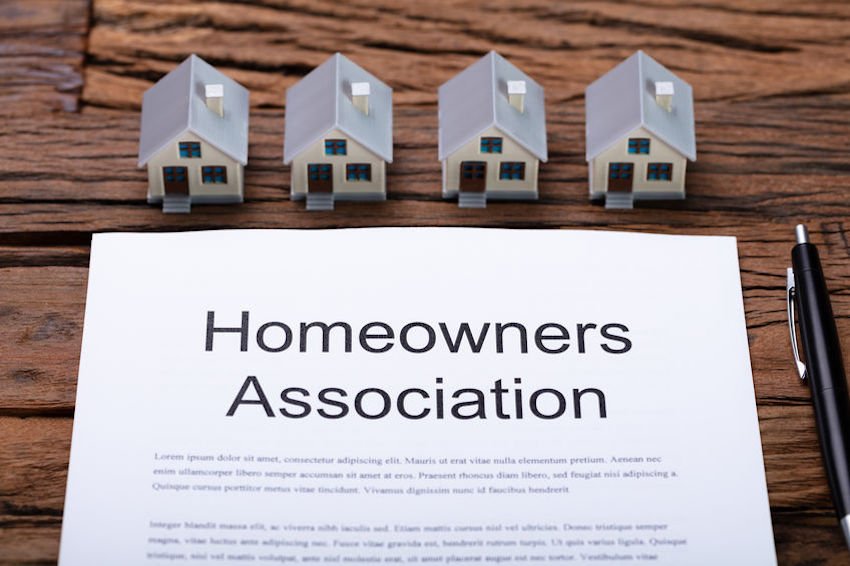The Function of an HOA in Establishing and Enforcing Area Standards for Residents
The role of a Homeowners Organization (HOA) in applying and developing neighborhood guidelines is essential to preserving a cohesive and orderly property atmosphere. By developing clear guidelines that govern elements such as property upkeep and area conduct, the HOA not just sets standards for homeowners yet additionally promotes a sense of belonging and accountability.
Recognizing House Owners Associations
Homeowners organizations (HOAs) act as regulating bodies for property communities, playing an important role in keeping building worths and fostering a feeling of neighborhood. Generally created by designers, HOAs are composed of home owners within an assigned location that elect a board to oversee the organization's activities. The key functions of an HOA consist of applying community regulations, handling usual areas, and arranging community occasions.
HOAs operate under a collection of governing records, including restrictions, problems, and commitments (CC&R s), which outline the legal rights and responsibilities of house owners. These laws aim to guarantee that homes are kept to a certain requirement, therefore protecting the aesthetic charm and total value of the community. Furthermore, HOAs commonly accumulate dues from property owners to money upkeep, landscape design, and other neighborhood solutions.
The visibility of an HOA can significantly influence the living experience within a neighborhood (hoa condo). While some locals appreciate the organized setting and amenities provided, others may find certain policies restrictive. Balancing the interests of all property owners is necessary for an HOA to operate properly, ensuring that it offers its desired objective of boosting area living while valuing specific home owner civil liberties
Creating Neighborhood Guidelines

To begin, an HOA should conduct surveys or convene that allow locals to voice their worries and suggestions. This participatory process promotes a sense of ownership and boosts conformity. Next off, the HOA board have to assess the responses to recognize typical styles and concerns that necessitate formal inclusion in the guidelines.
It is additionally essential to ensure that the guidelines are clear, succinct, and conveniently recognized. Obscurities can bring about misconceptions and disputes, threatening the objective of the guidelines. Furthermore, the guidelines should be thorough, covering numerous elements of community living, consisting of property upkeep, noise levels, and usage of typical areas.
Enforcement of Regulations
Efficient enforcement of community regulations is vital for maintaining order and making certain that all citizens stick to the developed guidelines. An HOA needs to apply an organized approach to apply these policies, which often includes a mix of tracking, interaction, and penalties for non-compliance.
First, normal evaluations and area patrols can help recognize violations, making sure that rules are constantly applied throughout the area. This proactive tracking allows the HOA to deal with concerns prior to they escalate, fostering a feeling of liability amongst locals.
2nd, clear communication is vital. Homeowners should be notified of the regulations and the treatments for reporting violations. An open line of communication motivates homeowners to voice concerns and seek explanation on guidelines, you can check here which can enhance compliance.

Last but not least, when offenses take place, the HOA has to apply consequences as described in the regulating files. This may include warning letters, fines, or, in extreme instances, lawful activity. It is very important that fines are used relatively and constantly to preserve count on within the community. By effectively imposing policies, an HOA can cultivate a harmonious living setting that shows the cumulative worths of its residents.
Advantages of HOA Laws
Numerous advantages occur from the implementation of HOA guidelines, which serve to boost the visit this site lifestyle within a community. One main advantage is the upkeep of building values. By enforcing requirements for looks and maintenance, HOAs ensure that homes and common locations continue to be appealing, promoting a preferable living setting that can cause increased property values in time.
Additionally, HOA policies promote uniformity and harmony within the community. This coherence in layout and maintenance aids to produce a feeling of belonging among residents, adding to community pride and a favorable atmosphere. Developed standards help with dispute resolution among neighbors by offering clear expectations and methods for actions, thus decreasing disputes.
One more substantial benefit is the arrangement of shared services and services. Numerous HOAs take care of area facilities such as parks, clubs, and swimming pools, which improve entertainment opportunities for locals. These amenities not only enhance the quality of life but additionally encourage social communication.
Ultimately, the guidelines set forth by an HOA grow an efficient, unified area, making certain that citizens delight in a high criterion of living while promoting an encouraging environment for all property owners.
Common Challenges Faced by HOAs
Amidst the advantages that house owners associations (HOAs) can give, they additionally experience a range of difficulties that can hinder their performance. Many click now property owners may not take part in meetings or neighborhood activities, leading to a separate in between the HOA board and citizens.
Disagreements can arise when citizens feel that enforcement is irregular or biased, possibly leading to problems within the neighborhood. In addition, HOAs typically face financial constraints, which can limit their ability to preserve typical areas or fund community projects.
In addition, browsing lawful complexities can be discouraging for HOAs. Evolving and altering demographics area needs require HOAs to adjust their guidelines, commonly fulfilling resistance from long-lasting homeowners who are accustomed to standard standards.
Verdict

By developing clear policies that govern aspects such as building upkeep and community conduct, the HOA not only sets criteria for locals but also cultivates a sense of belonging and liability.Homeowners associations (HOAs) serve as controling bodies for property areas, playing an essential duty in maintaining home values and fostering a feeling of community. Many homeowners may not get involved in conferences or neighborhood tasks, leading to a detach in between the HOA board and citizens. Altering demographics and developing area needs require HOAs to adjust their standards, commonly meeting resistance from long-standing homeowners who are accustomed to conventional norms. Through the development of clear policies and consistent enforcement, HOAs promote residential property upkeep, neighborhood pride, and count on among residents.